Textile Waste Is A Big Problem - Here's Why
Last week I was lucky enough to attend a seminar on how to keep clothing out of landfill. Not only was it a great way to reconnect with some of my favourite sustainable buddies, but really got us all thinking again about the issue and possible solutions. But first, he's me and the buddies!
Last week I was lucky enough to attend a seminar on how to keep clothing out of landfill. Not only was it a great way to reconnect with some of my favourite sustainable buddies, but really got us all thinking again about the issue and possible solutions. But first, he's me and the buddies!

Image of me, Alexia Spalding who created Good Day Girl and pioneered make-to-order clothing, Courtney Holm, founder of A.BCH and now Circular Sourcing, Claire Press, author, advocate and founder of Wardrobe Crisis podcast, and sustainability consultant Julie Boulton
The session was based on the release of the new research project below. There's a lot to read here, but if you're not familiar with the full landscape, I wanted to fill in the gaps. So, exactly how much textile waste is produced each year?
Each year, the world produces around 97 million tons of textile waste, and in Australia, that's 600,000 tons heading into landfill. Yep, that's right! But wait, there's more. Globally this is projected to reach 134 million tons by 2030! These colossal stats highlight the urgent need for the development of sustainable, circular practices for used clothing globally. This new research published in Australia by RMIT, commissioned by Kmart and the Queensland Government, highlights how things work here in terms of gender, age and demographics, but to set the scene, we’ll delve into the statistics, sources, and environmental impacts of textile waste more globally, and explore potential solutions to this growing problem.
Key Takeaways
- The fast fashion industry has significantly contributed to the problem over the last two to three decades, with fast fashion waste statistics showing only 12% of clothing material from this sector being recycled.
- Innovative recycling technologies and circular economy models are essential for reducing the environmental impact of textile waste in the fashion industry, but we can't develop them and get them up to scale fast enough. Even trickier in a country like Australia with an enormous land mass and a relatively tiny population. So much carbon is added moving textiles long distances.
- Re-sale, rental and refurbishment needs to increase for us to develop a true clothing circular economy where we see used clothing as a 'resource' and not 'waste'.
- It would be super helpful for us to buy less new clothes, thereby reducing garment production and the carbon footprint of what we wear!
Overview of Annual Textile Waste Production
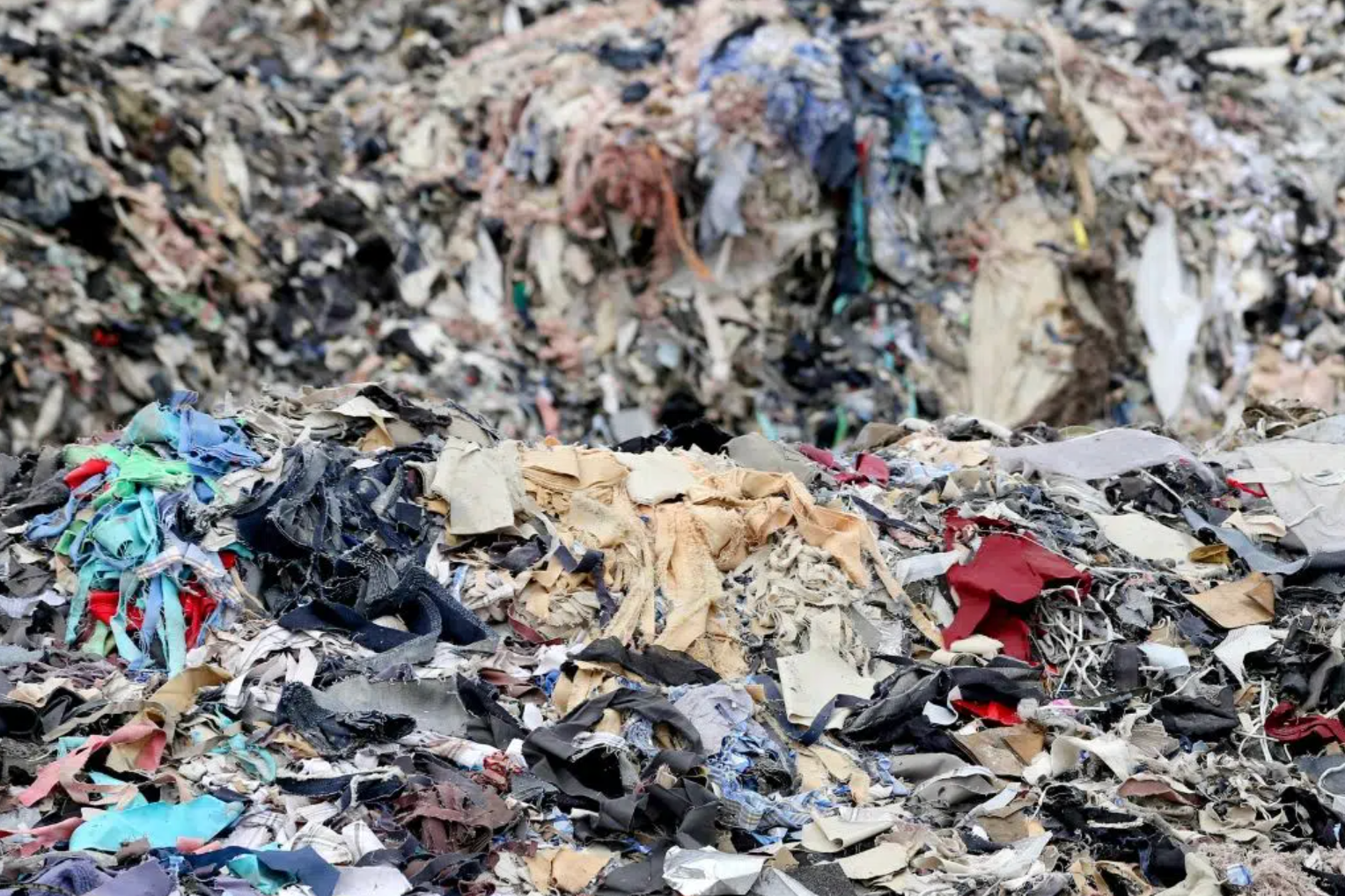
An image showing textile waste courtesy of Earth.org
97 million tonnes is a staggering figure, which has seen a significant increase over the last 30 years since fast fashion became universal, and for the first time in history, our clothing production has overtaken our capacity to effectively dispose of it. Fast fashion not only makes the least durable clothing using the most synthetic materials, but it also encourages the rapid turnover of clothing, and is the major contributor to these awful figures. The phenomenal rise of cheap, trend focused fashion may feel like fun at the time, but there's no party without a hangover.Regional Breakdown
In the United States, about 11.3 million tons of textile waste are generated each year, making it one of the largest contributors globally.In the EU, nearly 7 million tonnes of textile waste were generated in 2020, with the average EU-27 resident producing 16 kg. Less than half of used clothes are either reused or recycled, leading to significant amounts being sent to landfills.
In the UK, it's 1.4million tonnes of clothing waste as of 2022.
In Australia it's 600,000 tons - the average Australian buys 27kgs of clothing each year and disposes of 23 kgs of it.
However, here are some interesting stats on Australia from the research project!
- 87% of Australians donate clothes to charity
- At 18%, we buy more second hand clothing than places like the EU - 5-10%
- We wash at lower temperatures and line dry more than other countries - could be the cold wash shared laundries and excess of sunshine?
- There are gender differences: Women dispose of clothing more frequently and men are more likely to throw used textiles in the red bin
- 50% of Australians are unwilling to pay even a small amount for the disposal of textiles
- Only 55% of us are confident to sew on a button!
- 65% of men would never resell or rent whilst 40% of women will
- 30% of us are 'early binners'!
- Disposing of unwanted textiles and goods costs Salvos $5m a year
- 53% of is spend $50-100 a month on clothes, and 9% of us $200 plus
- Over the last 20-30 years, we have consumed more than we can recycle or dispose of. Hello fast fashion!
- 16% of Australians have worn all the clothes in their wardrobes in the last 12 months.
Sources and Types of Textile Waste
For the uninitiated, there's waste and there's waste. Some stays in our factories and never reaches our shores. The rest stays and ends with us.Pre-Consumer Textile Waste
Pre-consumer textile waste is the waste generated during the manufacturing process, which includes everything from leftover materials to surplus fabric inventory. Each year, approximately 18 million tons of textile waste result from leftover materials in the fashion industry including manufacturing offcuts and unsold inventory due to overproduction. Improvements in plotting and cutting can help. Our Portugal factory has state-of-the-art computer plotting, but inevitably there are offcuts. I'm hoping to get them a compost bin - lunch scraps/organic cotton/leaves - repeat!
Post-Consumer Textile Waste
Post-consumer textile waste arises from discarded clothing and household textiles after they have been used by us. Rapid replacement of clothing due to cheap fast fashion trends significantly boosts this.A major challenge in recycling post-consumer waste is the mixture of materials used in clothing production, complicating recycling efforts. Blends are almost impossible to recycle. More on that below...
Deadstock and Overstocked Items
Deadstock fabric refers to excess stock from overproduction or changing styles. Local pioneers Circular Sourcing in Melbourne have established a great business on-selling deadstock fabrics, benefitting:
-
fabric manufacturers who are left with odd rolls and pieces that they can't sell
-
brands who have over-purchased (which they kind of have to to make sure they have enough!) and don't want to waste it
-
smaller brands and start-ups who can't afford the minimum quantities of around 300-500m that are required for make-to-order
Times are really tough right now so anything makers and brands can do to monetise deadstock fabrics, whilst also benefiting smaller businesses is a great economic result for all, on top of the environmental benefits.
Initiatives like ThreadTogether help find homes for brands who have over-produced and overstocked items.
Environmental Impact of Textile Waste
The environmental impact of textile waste is profound and well known, affecting both human health and the environment. Clothing dumping in places like Ghana, which imports up to 15 million items of clothing a week, have had a devastating impact on the environment as the quality of clothing sent has deteriorated (hello fast fashion again). The unwearable, mostly synthetic clothing has to be dumped where it releases pollutants and contaminates water supplies with harmful chemicals. And remember, these synthetics are plastics which stick around for hundreds of years. Fast, cheap fashion means that polyester (plastic) makes up 60% of that total.
Water Pollution
The textile industry is a major source of water pollution, particularly from dyeing and processing in pre-production. An estimated half a million tons of microplastics enter the oceans each year mostly due to laundering which is a major concern. The initial washes of synthetic textiles release the most microplastics into the oceans, contributing to global water pollution. Research for our BCorps gave us the exact quantities released over 5 washes of synthetic fibres, allowing us to calculate that for every 1000 bras we sell, we potentially save 9kgs of micro plastics from conventional bras. The UN anticipates there will be more plastic than fish in our oceans by 2050. Several years ago, the Guardian published an article where research shows that since the 1940s, plastic has become part of our fossil record. Ever since the post-war gluttony on cheap nylons (yes Ok, there was a long war, raw materials were scarce), we've been washing that stuff into our oceans and our fossil records. The iron age. The bronze age. We are the plastic age 😫.
Despite all the hoo-ha and green-washing around recycled synthetic fibers, these garments continue to release micro-plastics through laundering during their lifetime, having absolutely no less impact than virgin fibers. There is nothing much green about recycled textiles such as polyester, other than a slight reduction in emissions at the manufacturing stage. Beyond that, during its lifecycle and end of life, it operates exactly the same as virgin polyester and plastic. We work with Seabin as a donation partner via i=change, check out the wonderful work they do, but really, we need to stop the plastic going in there in the first place! And if you don't know about Guppy Friend and it's ability to trap your laundry micro-plastics, check them out too.
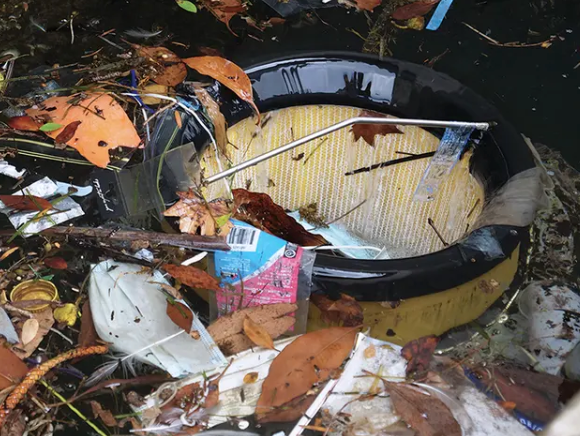
A photo of one of our selected donation partners - Sea Bin's plastic catcher!
Greenhouse Gas Emissions
The textile industry contributes significantly to air pollution, generating approximately 1.2 billion tonnes of CO2e emissions annually. This includes nearly 10% from fast fashion. Textiles made from synthetic fibers can take over 200 years to decompose in landfills, where they release methane gas and toxic substances. During the incineration of textiles, additional greenhouse gases and air pollutants are released, adding to environmental harm. These global carbon emissions exacerbate the climate crisis.
Current Textile Waste Management Practices
Effective textile waste management is essential for reducing its environmental impact.
New regulations in the EU mandate that brands must cover the cost of textile waste starting in 2025.
California is making textile recycling mandatory, as of 2024, woohoo, go Gavin Newsom!
In Australia, Seamless was launched this year to engage brands and consumers in product stewardship to ensure as much clothing as possible stays out of landfill, and is appropriately disposed of.
Textile Recycling Technologies
Recycling technologies can be categorised into mechanical and chemical methods. Mechanical recycling maintains the original characteristics of the textile fibers, while chemical recycling involves breaking down fibres into their original monomers. Only 1% of clothes get recycled into new garments. Staggering...
In Australia, the fabulous Blocktexx can recycle blended polyester and cotton chemically. The polyester and the cellulosic material gets pelletised where it can be re-used in textiles, or building materials. But recycling textiles is hard, bear in mind we can't recycle other blends right now, and we can't recycle anything blended with spandex. Hence why The Very Good Bra won't use any!
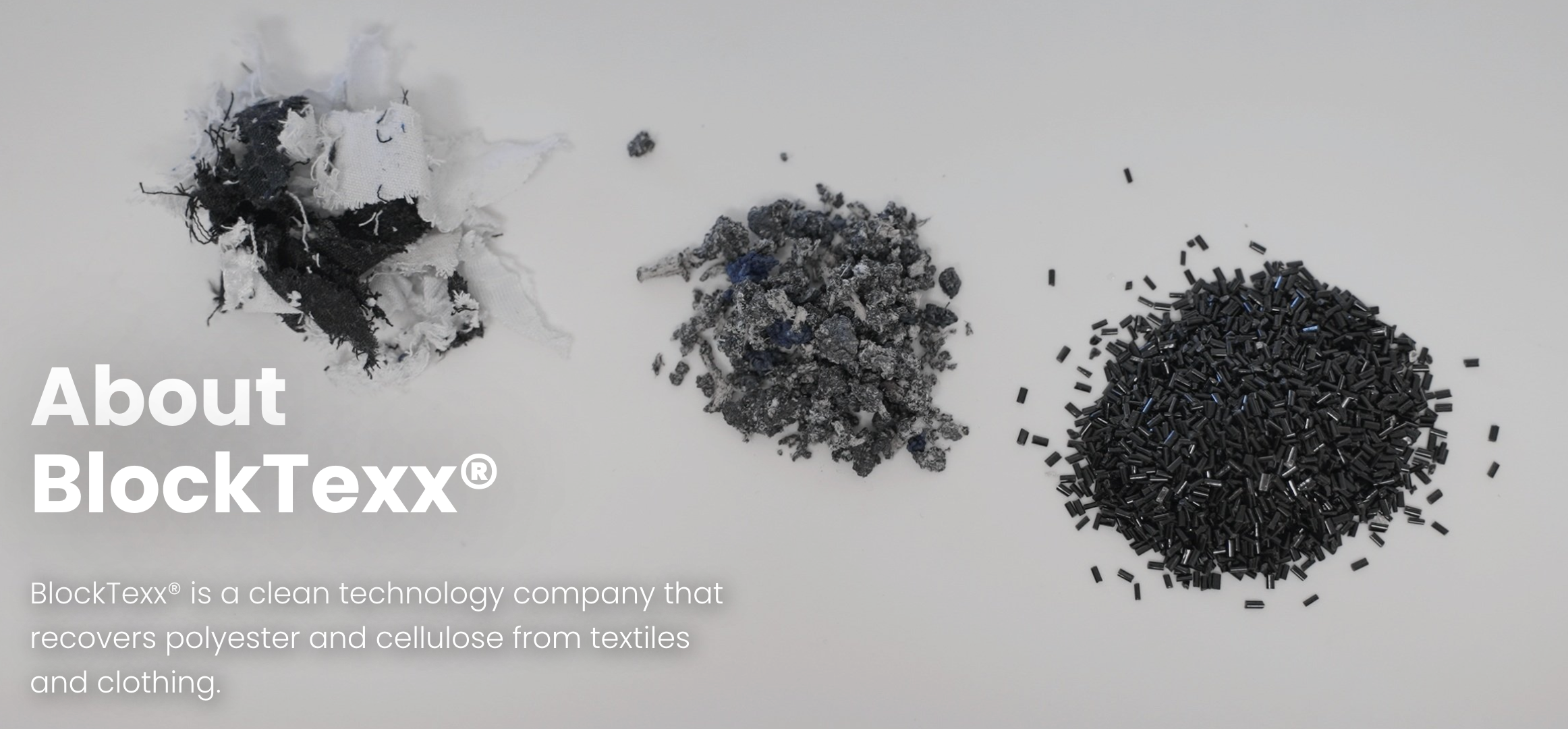
Over the last decade it's been inspiring to see the rise of textile to textile recycling ventures such as Swedish Renewcell, and then devastating to see them fail. With great noise and bluster, brands like H&M and Inditex (Zara) invested in the technology, but then didn't buy the material. The spinners and weavers that it partnered with also weren’t prepared to work with a new material, and were sometimes unable to tweak their processes. This is not very circular thinking at all and sadly again shows a 150 year old industry set in it's ways, which remains driven by cost margins which can't accomodate change or the slightest additional premium. Brands hadn’t budgeted to pay a premium as production scaled up. More on that failure here.
Innovative solutions like Redwave TEX, an automated sorting machine, enhance textile recycling efficiency by classifying textiles based on various parameters like material type and color. However, only 15% of used textiles are recycled effectively, the remainder ending up in landfills.
Donation, Rental and Secondhand Markets
Donation initiatives aim to extend the lifespan of clothing and divert it from landfills by getting it re-used. Secondhand markets promote a circular economy by facilitating textile reuse and as above, are very much on the rise. Despite the EU lagging behind us in buying second-hand clothing, I remember my last trip to Paris, being delighted to see entire floors of premium stores like Galleries Lafayette given over to vintage resale, and of course, Vestaire Collective was the pioneer in upmarket vintage re-use. There's also a rise in clothing swap initiatives in Australia such as The Clothing Exchange, Swap Up, and locally the City of Sydney is running it's own programmes. All of this helps keep textile products out of landfill.
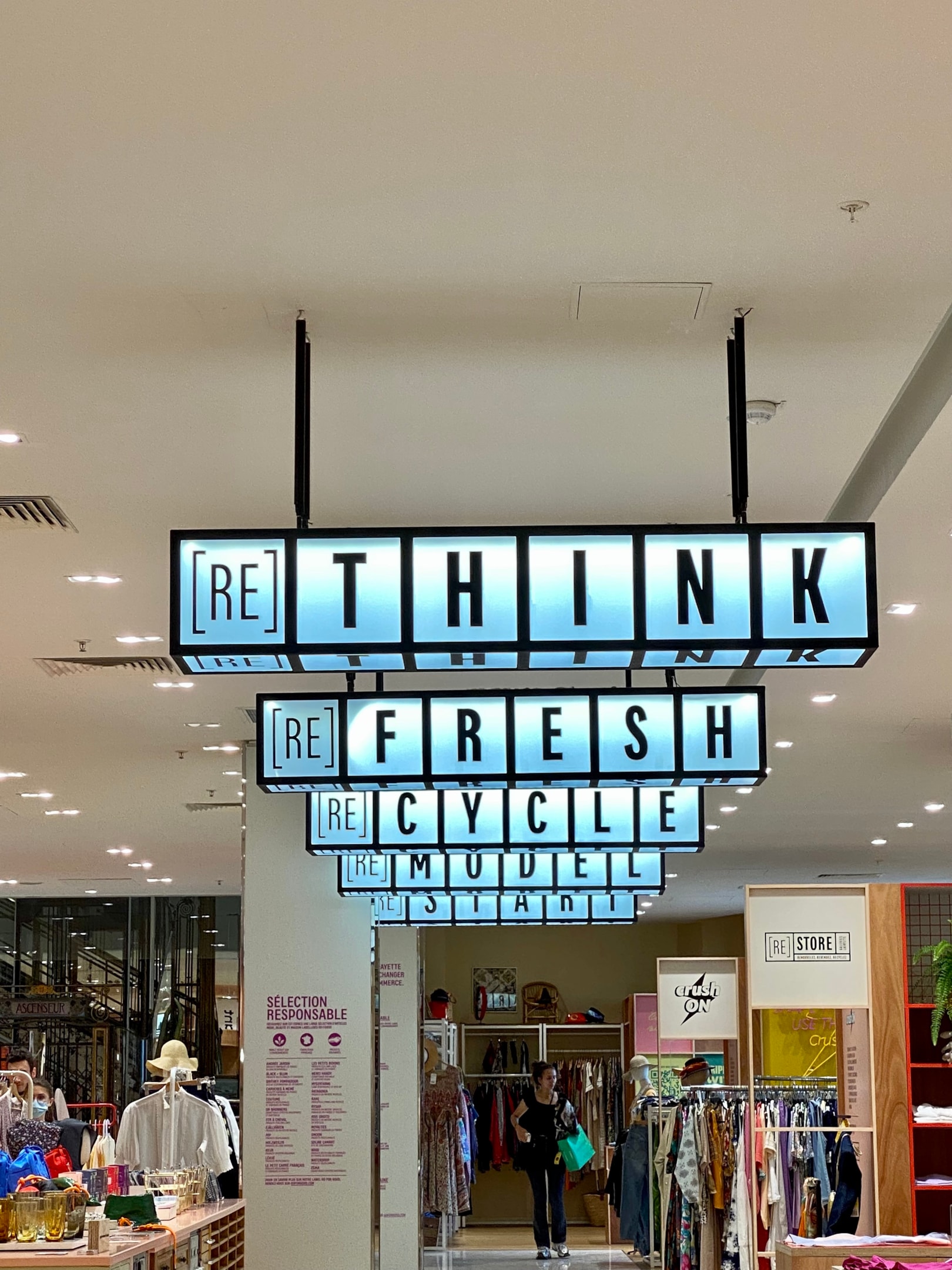
Renting clothing is another valuable approach to reduce the resources needed for new clothing production. Check out local heroes Ekoluv, The Volte, and Glam Corner for starters next time you have a big event! Increasing environmental education is essential to making resale and rental approaches more accepted. We have to ensure that from an early age, these options are considered alongside buying something new.
Upcycling and Repurposing
Upcycling and repurposing textiles can significantly reduce waste and promote sustainability and is a growing trend because of its ability to transform pieces into something unique. If we can use garments for as long as possible, repair and maintain them, and then donate, repurpose, and finally recycle, we can significantly reduce textile waste.
Composting and Worming
As you know, at The Very Good Bra we are mad on composting! So much so we initiated the development of a world first Australian Standard for textile composting. We are close (after over 2 years of super hard work, particularly by Deakin University) to releasing a Technical Specification for public comment. Once we have the standard, globally, we can all use the same repeatable testing methodologies to make sure we are measuring the same things. Until we have that, there are worms. Worms are the highest arbiters of good taste and good materials. If a worm won't eat it, it's toxic and/or plastic.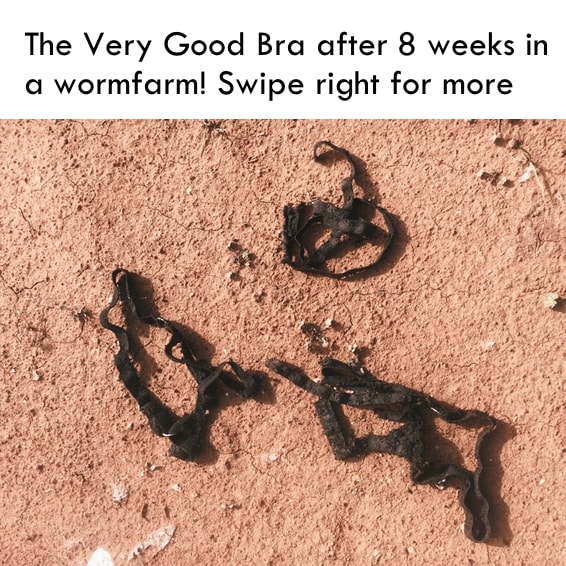
Consumer Behavior
Consumer habits significantly impact textile waste generation and disposal. About one in three consumers preferred to repair clothing themselves or take it to a professional repairer, especially if they had paid a higher price or felt emotionally attached. Despite this, 84% of people owned garments they hadn’t worn in the past year. Educating consumers about the impacts of textile waste can encourage more sustainable practices in purchasing and disposal.
Sustainable Production Methods
Sustainable production methods are crucial to reducing the environmental impact of textile waste. Eco-friendly materials such as organic cotton avoid harmful environmental impacts and contribute positively to sustainable production. Choosing 100% natural fibers like organic cotton can reduce water pollution compared to synthetic options, as natural fibers do not shed microplastics. Repurposing textiles minimizes waste by creatively finding new uses for existing materials, promoting a circular economy.
Circular Economy Models
Circular economy models are a key component of reducing the environmental impact of discarded clothing. The above are all illustrations of the circular options, worm farms being an example of a botanical circular economy.And to finish off, a word from The Ellen Macarthur Foundation...
'Our vision of a circular economy for fashion means building an industry that designs products to be:- used more
- made to be made again
- made from safe and recycled or renewable inputs' Sounds so simple doesn't it?! Read more here on it's view of a fashion Circular Economy.











